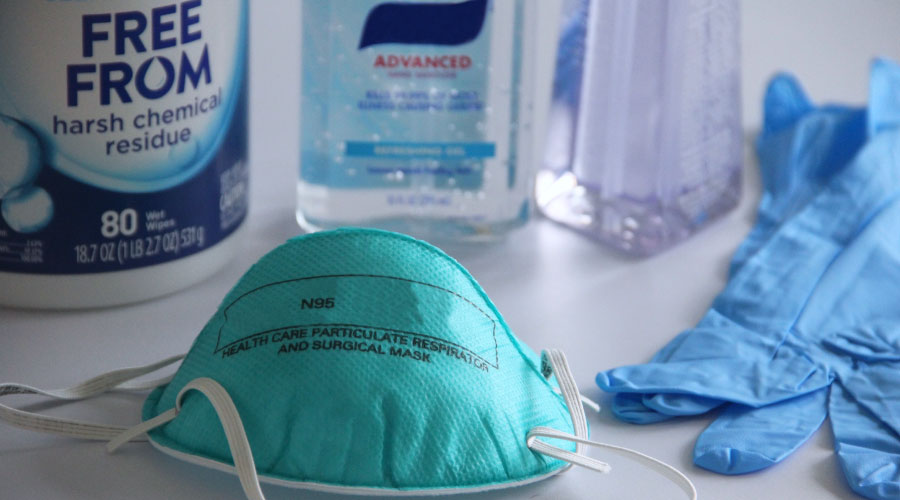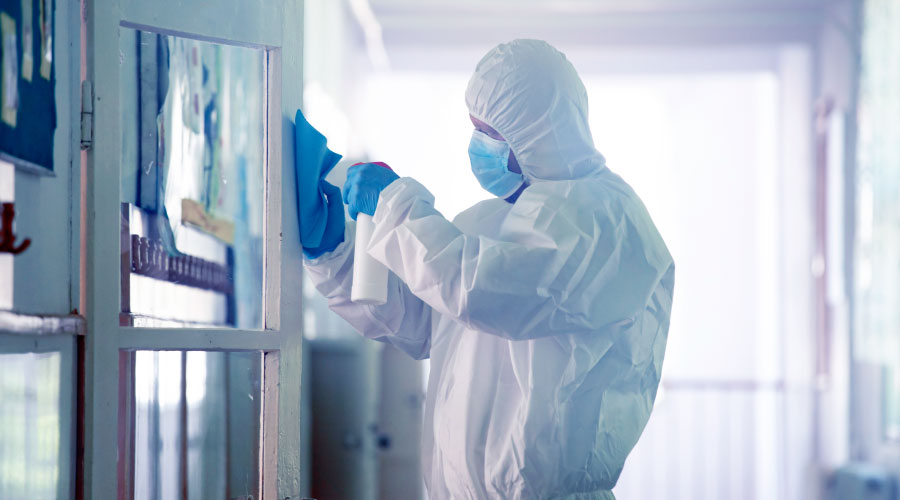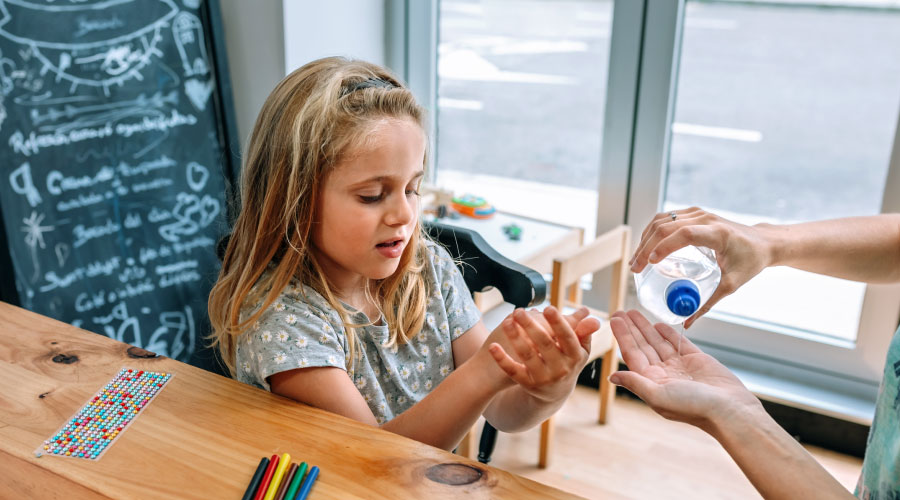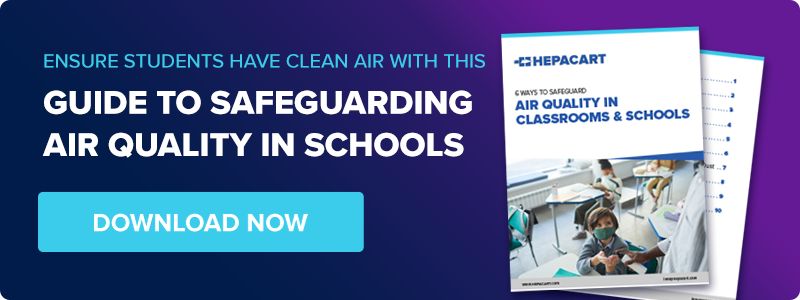Share this
Germ Mitigation Tips for School Facility Directors as Winter & Flu Season Begins Amid COVID-19
by Mark Farnsworth on Nov 25, 2020
Effective facilities management is as much about managing people’s behavior as it is managing the facility.
The fact that deadly pathogens are invisible to the naked eye renders basic germ theory unconvincing to a significant number of people (especially younger students), which poses a unique challenge to facilities managers in the age of COVID-19. Besides making sure surfaces are disinfected and the air is clean, you must somehow guide behavior in the right direction with policies, procedures, signage, and other tools.
It's fair to say that setting up behavioral guidelines for what humans do inside your building is a pretty big deal. But they’re not the only deal. With cold and flu season here in addition to the novel coronavirus, your tasks are really twofold.
1. Prevent the spread of disease from person to person through changes to scheduling, reconfiguring physical spaces, and influencing individual behavior.
2. Eliminate environmental pathogens (both on-surface and airborne) that cause colds, influenza, COVID-19, and other contagious illnesses.

South of the equator, where winter flu season has just ended, influenza rates were much lower than in previous years, almost certainly attributable to mask-wearing and social distancing. The CDC says this has good implications for the rest of us: Interventions aimed against SARS-CoV-2 transmission, plus influenza vaccination, could substantially reduce influenza incidence and impact in the 2020–21 Northern Hemisphere season.
In other words, extraordinary protective measures likely are keeping students, parents, teachers, and staff safe from a number of contagious illnesses. It’s nice to hear some positive news heading into a potentially challenging season. But what other things can you do or put in place to ensure the healthiest winter possible?
Establishing & Refining Policies and Procedures
Unless your school is under a prolonged shutdown, you are already managing a reopened facility based on new pandemic-area rules that touch virtually every area of your profession, such as:
- Building access protocols
- Cleaning procedures
- Provisions for vulnerable personnel
- COVID-19 testing, surveillance, and contact tracing
- Quarantine plan
- Relationship with a local clinic or hospital
- Pandemic sick policy
- Return to work after a positive test for COVID-19
- Mailroom and package handling
- Travel restrictions
- Transportation and bus driver procedures
- Cleaning protocols: areas, processes, disinfectant used, and frequency
- Cleaning supplies
- Equipment startup
Laying out distancing floor markers, replacing drinking fountains with bottle-fill stations, and installing hand sanitizer terminals are common adaptations that allow schools to mitigate person-to-person transmission.
Cleaning and Disinfecting Surfaces
Naturally, it's important to make cleaning and disinfecting surfaces part of the daily routine, since germs can be transmitted via door handles and other publicly-handled objects. This CDC toolkit for school administrators provides guidance on developing a plan for cleaning, disinfection, and hand hygiene in schools. This is particularly helpful through cold and flu season, which typically starts in October and can go as late as March and even April, often peaking in February.

In addition to routine cleaning by custodial staff, teachers can be supplied with cleaning products, gloves, and instructions to clean before students arrive, between classes, and at the end of the day. Adequate ventilation must be provided, and of course, the disinfectants must be stored away from student access.
Items to be cleaned in the classroom include:
- Door handles and knobs
- Desks and chairs
- Cabinets, lockers, and bookshelves
- Shared computer keyboards and mice
- Light switches
- Pencil sharpener handles
- Sinks and surrounding areas
- Countertops
- Shared electronics such as printers
- Other shared learning materials
Disinfecting the Air
While facilities managers must schedule regular disinfection of surfaces to reduce transmission of influenza and other diseases that spread primarily by contact, the most recent guidance by the CDC on how COVID-19 spreads states that touching surfaces is not the most common way to catch the disease. Without taking away from the importance of surface disinfection — which certainly is effective against other illnesses and could be a minor source of SARS-Cov-2 transmission — the guidance serves to place increased emphasis on mitigating airborne transmission, the primary defense against which is, of course, wearing a mask.
Beyond that, it's also important that you do all you can to keep the air pathogen-free. Indoor air is safest when there's good air circulation, a significant intake of outdoor air, and well-maintained HVAC systems that use HEPA filters.
HVAC Strategies
In consultation with an HVAC professional, take steps to improve ventilation that include:
- Increasing the percentage of outside air
- Increasing total airflow
- Disabling controls designed to save energy that reduce air supply based on either temperature or occupancy
- Encouraging the opening of windows when and where practical
- Replacing filters frequently
- Examining filter housings and finding ways to prevent air from bypassing them
- Re-evaluating the position of supply and exhaust air fixtures and adjusting zones to generate air movement from cleaner to less clean areas. (Gyms and visitor reception would be considered less clean than staff offices, for example.)
Removing Pathogens from the Air with Far-UVC
The CDC recommends that you consider using portable high-efficiency HEPA filtration systems to help clean the air in higher-risk areas, such as rooms with poor ventilation and spaces where choirs practice. It also recommends considering the use of ultraviolet germicidal irradiation as a supplemental technique.
Combine our HEPAFORCE® AIR Negative Air Machine with HEPA filtration and UV-FORCE® Airborne Disinfection Module with ultraviolet germicidal irradiation for best air purification strategy. Far-UVC uses ultraviolet to kill 99.99% of pathogens in one pass, including coronavirus and influenza, in a safe and effective manner. For a stand-alone option, look at our GermBuster Room Air Purifier with UV-FORCE®, a portable unit that can be wheeled into any room to provide continuous air disinfection.

Conclusion
In the past, infection control has quite naturally been more of a concern for hospitals than for schools. Now, some of the tools used in hospitals are of greater interest to facilities managers in schools and other non-medical buildings. To come up to speed on infection control, download our free Infection Control For Facilities Managers: The Complete Guide.
Shop all HEPACART® products, including our HEPAFORCE® AIR Negative Air Machine, UV-FORCE® Airborne Disinfection Module featuring far-UVC, and stand-alone GermBuster Room Air Purifier with UV-FORCE®. If you have questions, give us a call at 913.789.9590.
Resources
- Six Steps for Properly Cleaning and Disinfecting Your School (CDC handout)
- Cleaning and Disinfecting in School Classrooms (CDC handout for teachers)
- Pandemic Recovery Planning: A 10-Step Process (facilitiesnet.com checklist)
- UV Technology Shines New Light on COVID-19 Infection Prevention


